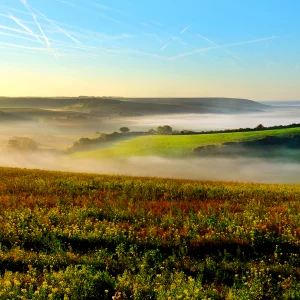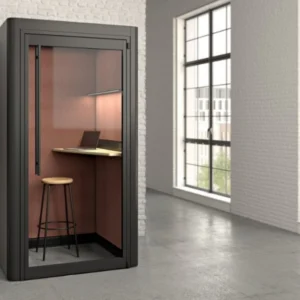
Margate has seen better days. It is a town that was geared to a market that no longer exists: the once thriving seaside resort was one of the major casualties of the explosion in popularity of cheap package holidays in the Seventies. The current economic climate has also seen a decline in presence of high-street retailers, with national brands such as River Island and Marks and Spencer pulling out. ‘I think it is a shame for Margate,’ says David Chipperfield, ‘that its struggle is so visible, the struggle is paraded in front of you’.
This April, following two competitions over a period of 10 years, the town has opened its new gallery, the Turner Contemporary, designed by Chipperfield. It’s been a while since the British architect has designed a building in the UK open to the general public, the last being the River and Rowing Museum in Henley-on-Thames in 1997. Since then, the architect has received some of the highest honours his nation and profession can bestow upon him: the RIBA gold medal and the Mies Van Der Rohe prize in 2011, a CBE in 2010 and the Order of Merit of the Federal Republic of Germany in 2009. With the Turner Contemporary and the Hepworth gallery in Wakefield opening in May, it seems Sir David Chipperfield is about to engage with the great British public once more.
The Turner Contemporary is housed on the site of the boarding house that the painter JMW Turner stayed in on his frequents visits to the town, hence its name, and where his relationship with his landlady Mrs Booth blossomed. The new gallery dominates the view at the east end of the beach, as the headland begins to rise above the town. The bay is characterised by a sweep of flashing, chiming amusement arcades and faded cafes with tired facades, each enduring a hangover from the days of heady seaside success.
Chipperfield was appointed as the architect in 2006, the previous scheme by Norwegian architect Snøhetta had been shelved as costs were spiralling. The original proposal was for a shell-like structure that sat out in the choppy waters of the North Sea. With the benefit of hindsight, it was part of a fleeting fashion, which saw architects seeking to create visually spectacular buildings, fuelled by the intoxicating mix of Lottery funding and emerging technologies – typified by Nigel Coates’ National Centre for Popular Music in Sheffield. The new building is back on the original site proposed in the competition, which the Snøhetta scheme ignored. ’Physically speaking, the site is difficult,’ says Chipperfield, ‘the previous scheme had a different relationship with the sea and we inherited the anxieties from that.’ When Chipperfield was appointed, a series of public consultations were staged to reassure the community, which was fearful of another debacle. ‘The emphasis was on delivery and working within limits,’ says the architect, ‘there could be no whiff of overspend or overtime.’

The Turner Contemporary is a robust building in form, character and material. The boat-shed volumes sit in defiant confrontation to the sea, its forms are assuredly crisp, forced by the galleries it contains. The planar exterior stands resolute against the incoming sea and wind, raised on a concrete plinth to prevent flooding. This practical measure also detaches the building from the promenade in front of it, presenting itself as a monument to the North Sea. On a particularly stormy day, the water can breach the sea wall and smash against the building. The exterior is clad in small panels of 24 mm laminated glass, held in place with aluminium supports, which has been bolt tested to withstand those forces. ‘It couldn’t look like it could be blown or washed away. Michelangelo said a good test of a sculpture is to roll it down a mountain, I think that’s true for architecture,’ says Chipperfield.
The ground floor is an extension of the public realm. A cafe sits on a courtyard that faces south towards the town across the beach. The expanse of grey concrete that holds back the road, which climbs up the headland, encloses the building from the cliff and ultimately the town. ‘It is a slightly stranded building,’ says Chipperfield, ‘stranded on the beach in a way.’ Inside, a space has been left over for a gift shop and information desk. On this floor, the building reveals more of its construction than in the gallery spaces above, it feels more rugged and less poised. In each of the Foyle rooms, a public space named after the Foyle Foundation which helped fund the gallery, large windows frame the sea. It’s a simple tactic to present the elements that define the town back to the visitor. The building celebrates the meeting of sea and sky that drew Turner back to Margate time and time again.

The gallery spaces occupy the first floor. ‘I remain convinced about the authority of room structure and getting daylight into all the spaces,’ says Chipperfield. He eschews talk of narrative and metaphor in this building, avoiding any puffery by concentrating on the tangible qualities of the spaces. The three simple galleries are top lit with an even north light. Chipperfield, along with Arup, worked the proportions of the room while mixing north and south light to achieve an even ambience that leaves no shadows.
The sober atmosphere that pervades these spaces could be dismissed as prosaic, but the emphasis is on quality, of both light and form. ‘The home of art is not the temple-like room of the museum,’ says Chipperfield. ‘You expect museums to be formal, I want this institution to feel like an artist’s studio where someone has come in and left their work on the wall.’
Chipperfield has provided a building that will serve the arts in north Kent well. In his words, ‘It’s a modest looking art centre, a good art space using money in the most appropriate manner.’ It’s hard not to admire the quiet confidence that the building exudes. It stands as an affront to nature, the faded Victorian character of the town and more fashionable cosmopolitan locations that might be a more obvious choice for this type of building. His work in Margate is now complete, it is up to the directors of the programme, armed with the robust tool that Chipperfield has provided, to make the institution work.
Margate has aspirations. Since the completion of the gallery, talk of the town having a renaissance is rife. The national press has already reported that property prices are beginning to rise as a result of the institution opening. The Bilbao effect is widely disregarded as the over-simplification of a complex masterplan, even Gehry acknowledges it, and Chipperfield is careful to distance himself from the murmurings of regeneration. ‘Saying you want to do regeneration [with a building like this] is like saying you play professional rugby so you can be an after dinner speaker,’ he says. ‘We are suspicious of culture for the sake of it in this country. Regeneration is what politicians use to justify culture.’ Chipperfield has faith in his building to work on its own terms,in its own right. He is right about regeneration too, a single building cannot revive the fortunes of a town, the factors that determine the future of Margate are nebulous.

Margate’s link with Turner is somewhat tenuous too, it is not necessarily the first location that comes to mind when considering the artist. He was a frequent visitor, yet it seems the connection is being forced upon the town in an attempt to consolidate the arts scene in the area and bestow gravitas on the new institution. The Turner Contemporary started in 2001, using temporary locations in Margate to stage exhibitions, workshops and cultural events. The project has run alongside the attempts to revive the famous Dreamland theme park further along the seafront (see panel). The director of the gallery, Victoria Pomery, is more bullish about the ambition of the cultural programme. ‘Turner Contemporary on its own can’t do everything, but I am positive that art does regenerate and does make a difference to the lives of people,’ she says. ‘We will be inspiring and challenging people about their lives, changing people’s mindsets.’ The opening show will feature works by artists Daniel Buren, Russel Crotty and Teresita Fernandez. The pieces are centred around a Turner painting, ‘the Eruption of the Souffrier Mountains, on the Island of St Vincent at Midnight, on the 30th of April 1812, from a Sketch taken at the time by Hugh P Keane, Esquire’. The contemporary art that is exhibited is highly conceptual and abstract. It’s a brave move to launch the gallery with a show that is less likely to appeal to those in search of art in the style of its namesake.
Undoubtedly, projects like the Turner Contemporary are a much-needed outlet for the vast collections of art that sit in storage units for the major galleries around the country. Institutions can extend their influence and create revenues through loaning their works to galleries like the Turner Contemporary, finding new audiences without the commitment of building their own spaces. Also, thoughtful and carefully designed buildings like the Turner Contemporary, which is masterfully executed, are providing spaces that are perfect for a revolving roster of exhibitions, typified by the continuing success of Nottingham Contemporary by Caruso St. John.
Come summer, Margate will have an added incentive to visit over its neighbours. Yet the Turner Contemporary has no permanent collection, its cultural programme will have to continue to engage local residents once the summer crowds have left and the grey skies of winter return. It is then, on the days the weather is at its most unforgiving and the locals are loathe to step out of their homes, when Turner Contemporary will be tested. ‘This is a building that brings together the town, the sea, the art,’ says Chipperfield. In a physical sense this is true, it’s apparent in the architecture, the coming years will show if this is true for the community. Turner might yet become synonymous with Margate.





